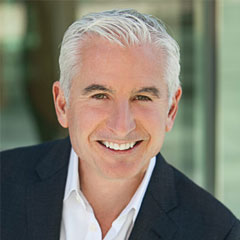
Don Neal
Step outside of your work role for a moment and think about your last vacation. Isn’t one of the best parts of taking a vacation the anticipation, the planning, the feeling you look forward to when you finally arrive at your destination? You can smell the ocean air, you can almost taste the meals, and you can imagine the feeling of being at the cafe sipping an espresso — the art, the culture, the people.
Look at any travel poster or ad and notice how it invokes a feeling by portraying an environment that stimulates your desires and reinforces the best qualities of the destination, like the rooftops in Santorini overlooking the Mediterranean, the Eiffel Tower, and the floating huts in Bali. If you had to design your own travel poster for your event, what would be the iconic image that would stimulate the desire of those you seek to attract? I can tell you it’s not a photo of a crowded trade-show floor, or a rooftop cocktail reception, or a large ballroom with a beautiful stage set. Nope, those images hardly make your mouth water or your pulse race in anticipation of being there.
You might be thinking: How can my annual meeting compete with a luxurious travel destination? But the truth is, you already are. We live in a time where attention is the most valuable currency, and everyone is fighting for it. You need to make your event irresistible and indispensable so that when the time comes to book that fancy vacation, the first thing your attendees do is check to see that it doesn’t compete with your event.
Here are three ideas to turn your must-attend event into a want-to-attend experience.
1. Don’t be constrained by what you’ve done in the past. Design an event that has all the elements of a great vacation: surprise, new foods, a new color palette, and iconic imagery. How would a cruise director do it?
2. Stop using photos from last year. It’s what every other event shows as the reason to attend. Create a travel destination campaign: Use art, imagery, and new ways of expressing what your audience desires. Be metaphorical, take liberties, start with emotional impressions, and bring them to life with new words and language. Here are some examples:
- C2 Montreal’s homepage features video highlighting the best of its events. It plays like a destination video, not an event video. (youtu.be/dSfdtvGDhcY)
- SXSW uses color, concerts, and crazy activations. (sxsw.com)
- Dreamforce is playful, with a strong theme. (salesforce.com/dreamforce)
- The S.E.M.A. Show uses comic-book imagery combined with videos of the products on site. (semashow.com)
- CES includes a great image like a product display, and highlights and topics that resonate with its audience. (ces.tech)
3. Change how you sell your event. Marketing is a seduction, so make your event seductive. Promote the event based not only on the features and benefits of attending but also on the emotional rewards of being at a transformational experience.
Architects, physicians, apartment-complex managers, hotel industry executives, manufacturing executives, and members of every other profession all have one thing in common: They want to belong to something. And when it comes to events, they want to experience something meaningful; they want to get away and come back renewed.
Give them what they want and what they need. Anticipation creates desire, desire leads to action, and action leads to a deeper connection with your organization. You’re building and selling a promise — a better career, a chance to meet interesting people, to do business, and to be more successful.
Don Neal is founder and CEO of marketing, strategy, and experience agency 360 Live Media.
More from Don Neal
- How Event Organizers Can Be More Interesting
- Events Need Element of Surprise
- What Do the Top 100 Events of 2018 Tell Us?
